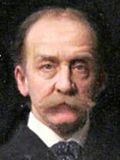February 1906 City of London by-election facts for kids
|
||||||||||||||||
|
Constituency of City of London |
||||||||||||||||
|---|---|---|---|---|---|---|---|---|---|---|---|---|---|---|---|---|
| Turnout | 63.19% ( |
|||||||||||||||
|
||||||||||||||||

A map of parliamentary constituencies within the County of London at the time of the by-election, with City of London highlighted in red.
|
||||||||||||||||
|
||||||||||||||||
The February 1906 City of London by-election was a special election held in the United Kingdom. It took place on February 27, 1906, for a voting area called the City of London. This area is often called the "Square Mile" and is known as the UK's main financial center.
A by-election happens when a seat in Parliament becomes empty between general elections. In this case, the seat became available because Alban Gibbs, a MP for the Conservative Party, decided to step down. He resigned to make sure that Arthur Balfour could easily win the seat.
Arthur Balfour was a very important politician. He had been the Prime Minister from 1902 to 1905. However, he had lost his own seat in the general election earlier that year. At the time of this by-election, he was the leader of the Conservative Party.
Contents
Who Ran in the Election?
Only two candidates ran in this special election. They were Arthur Balfour and Thomas Gibson Bowles.
Arthur Balfour: The Conservative Candidate
Arthur Balfour was the leader of the Conservative Party. He needed to win this election to get back into the House of Commons, which is a key part of the UK Parliament.
Thomas Gibson Bowles: The Free Trader
The other candidate was 65-year-old Thomas Gibson Bowles. He had been an MP for a different area from 1892 to 1906. He ran as a "Free Trader."
The Free Traders were a group of politicians who used to be Conservatives. They disagreed with Arthur Balfour's plan for "tariff reform." Tariff reform meant putting taxes on goods coming into the country. Instead, the Free Traders believed in "free trade," which meant no taxes on imported goods.
How People Voted
Arthur Balfour won the election by a large number of votes. This meant he could return to Parliament and continue leading the Conservative Party.
- Arthur Balfour (Conservative Party): 15,474 votes (78.92%)
- Thomas Gibson Bowles (Free Trader): 4,134 votes (21.08%)
Balfour won with a majority of 11,340 votes. This showed strong support for him in the City of London area. About 63.19% of the people who could vote actually did vote in this by-election.
See Also
- List of United Kingdom by-elections
- City of London constituency



